Ancient handicrafts preserved in museum
From:Chinaculture.org NetWriter:Date:2016-04-22
"One hundred years from now, collections in my museum will become precious historical relics," Sun Songlin, founder of a Beijing-based private museum said.
"We replicate national treasures as a way to protect and inherit ancient crafts, and we also create national treasures," Sun said, explaining the main goals of the National Museum of HUAXIA.
The museum doesn't have any antiques in storage, but on display are contemporary art pieces, especially art made using traditional techniques or intangible cultural heritage methods.
"Most museums are protecting cultural relics, but if we don't protect contemporary arts, they will become endangered relics in the future," Sun said.
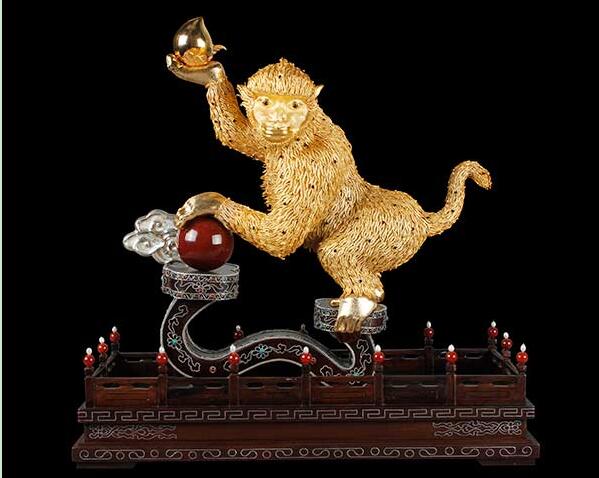
A zodiac monkey made using the filigree and inlay technique is among the museum's collections.
Therefore, the museum has absorbed a batch of prominent master craftsmen, including the old and the young. Young artists get a platform to show their talents and those older can better pass down their handicraft traditions.
Sun has long been recognized as a protector of traditional arts in China. He rose to fame owing to his contribution to the preservation of filigree and inlay technique.
Filigree and inlay is a fine craftwork that was exclusively applied to jewelry and ornaments made for China's imperial families. The technique appeared some 2,700 years ago and is among the eight superb crafts of Beijing.
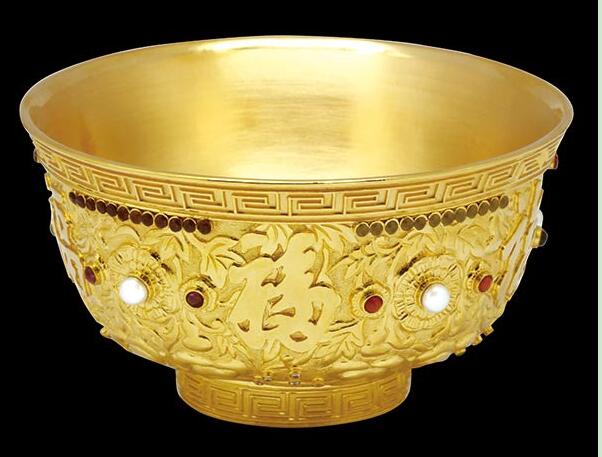
A gold bowl with the Chinese character Fu(福) means "blessing" or "good fortune" is among the museum's collections. The bowl was made by using the filigree and inlay technique.
The skill is actually a combination of two: filigreeing and inlaying. Filigree is applying nipping, plaiting, filling, jointing, piling and other handiwork to form various shapes out of very fine gold and silver threads. Inlay means to work gold or silver slices into different shapes, patterns or containers.
The craft, requiring exquisite workmanship from highly trained craftsmen, was listed among the nation's intangible cultural heritages in 2008.
"There were less than 10 people who knew the craft in 2008 in Beijing, and now there are more than 200 people doing this," Sun said, adding he is quite happy more people are using the technique.
Sun's efforts play a pivotal part in reviving the art, and he's been promoting filigree and inlay artwork.
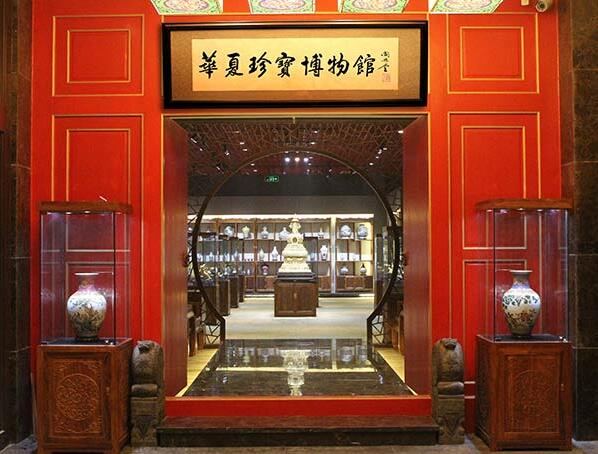
A view of the National Museum of HUAXIA in Beijing founded by Sun Songlin.
"The technique is purely handmade, and it takes about 10 years to master the craft", Sun said, "Besides, the maker has to be 30-60 years old, as the technique needs proper strength, neither too strong nor too weak."
During the 2014 APEC meeting in China, handbags made by using filigree and inlay techniques were given to the wives of participating countries' leaders as national gifts, which has made the ancient technique better known to the public.
"Among the more than 2,000 museums in China, there are only two profitable museums: one is National Museum of HUAXIA, and the other one is the China International Showgood Art Museum", Sun said.
Achieving such a success is not easy for Sun, who was born in a small village in Central China's Henan province, and brought up by his mother and elder brother. He came to Beijing in his 20s and worked in a restaurant at first.
Then he earned a college degree through self study and got the chance to work in a publishing group, where he read a lot of ancient Chinese classics and his understanding of Chinese civilization grew. Three years later, he quit his job and started his own business in the field of art investment.
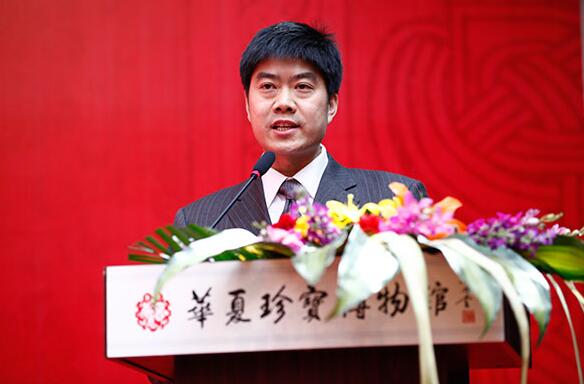
The founder of the National Museum of HUAXIA in Beijing, Sun Songlin.
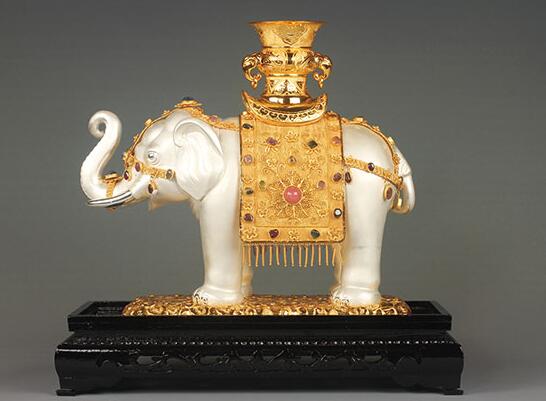
An exquisite elephant made using the filigree and inlay technique is among the museum's collections.

A sculpture of an exquisite pagoda is among the museum's collections.
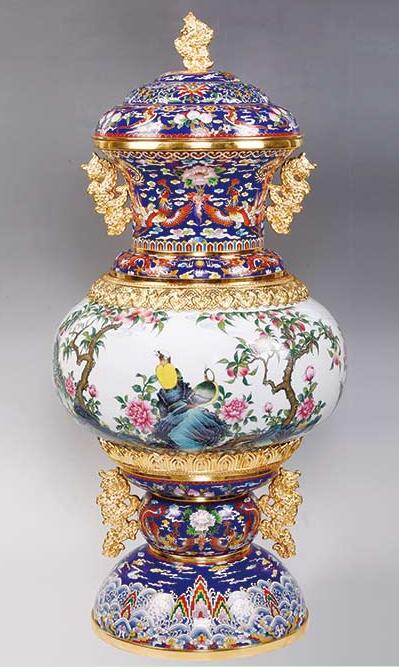
An art piece from National Museum of HUAXIA in Beijing. [Photo provided to chinadaily.com.cn]
Since stepping into the art field, he's cast his eyes on traditional art and hasn't stopped his efforts in promoting ancient crafts.
The museum is currently conducting a project that plans to create 1,000 pieces of art using ancient techniques, including the eight superb crafts native to Beijing, such as filigree and inlay, jade carving, cloisonné, and lacquer engraving. These master creations, joint efforts of numerous master artists, will tour around the nation, allowing the public to fully enjoy the beauty of ancient crafts.
"More than 600 pieces have been completed, and the tour exhibition will probably kick off next year," Sun said.
It is also partnering with the Palace Museum in Beijing and the Palace Museum in Taipei to replicate 50 treasures in each museum. Themed "Comparison of Ancient and Modern", ancient treasures and the corresponding crafts inherited through today will be exhibited at the same time, showing how ancient crafts have evolved with time.
"We want to call on more people to pay attention to cultural protection through collecting master craftsmen's works, as a way to help revive the intangible cultural heritage," Sun said.
"In 100 years, what the Palace Museum owns, I want to have in my museum too", Sun added.
Q&A
1. Many intangible cultural heritage and traditional handicrafts are dying out. Do you think there is a better way to protect them?
Sun Songlin: I think the best way to preserve culture is to educate people to love their traditional culture. If all its people would love to learn about the culture, collect national treasures and pass them down from generation to generation in their families, find confidence and enjoyment from the culture, culture will surely get a boom.
What I am doing now is not only protecting endangered crafts, but doing more to build people's faith in their national culture, which is my final aim.
2. How did you foster your connoisseurship for arts?
Sun Songlin: There is no shortcut in the cultivation of art connoisseurship; that is what Ma Weidu, a well-known Chinese connoisseur, said long before. For me, my road is like, first, I studied much basic knowledge about Chinese arts and crafts and connoisseurship, and then I went to big museums around the world to explore those well-known art pieces and linked them to my previous knowledge.
Next I communicated with many collectors and participated in the assessment and auctions of arts. I think if it is possible, one better take part in some cultural relic restoration work during his training to achieve connoisseurship. There is no shortcut, but passion and persistence.
3. Where do the collections in the museum come from?
Sun Songlin: Currently, there are more than 100 artists signing contracts with our museum, which include national intangible cultural heritage inheritors, contemporary Chinese arts and crafts masters, presidents and directors from large calligraphy and art associations. We collect their award-winning pieces, masterpieces, orphan works and other precious works.
4. According to your view, what's the difference between Chinese museums and foreign museums in protecting and inheriting arts?
Sun Songlin: I think the biggest difference lies in the recognition of the public to its own country's arts. In Japan and many European countries, many treasures are inherited within families as heirlooms, and they are naturally incorporated with modern life. Thus representative treasures with distinctive national traits are passed down from generation to generation.
In China, the family inheritance has almost disappeared, and the previous generation doesn't have a culture of passing it down to the next generation. What we want to do is to cultivate people to use fine art to fulfill the missing part of modern families.
5. Do you have any suggestions on investing in art?
Sun Songlin: For art investment, people with better economic conditions can pay more attention to well-known artists, and collect their masterpieces. While for other people, they can keep an eye on contemporary young artists and invest on outstanding ones.
For entry-level collectors, they can take part in some art exhibitions and art sharing events more to cultivate connoisseurship. They can also communicate with some mainstream artists and get to know them more before making an investment. Connoisseurship comes from experience, so watch more and listen more.

